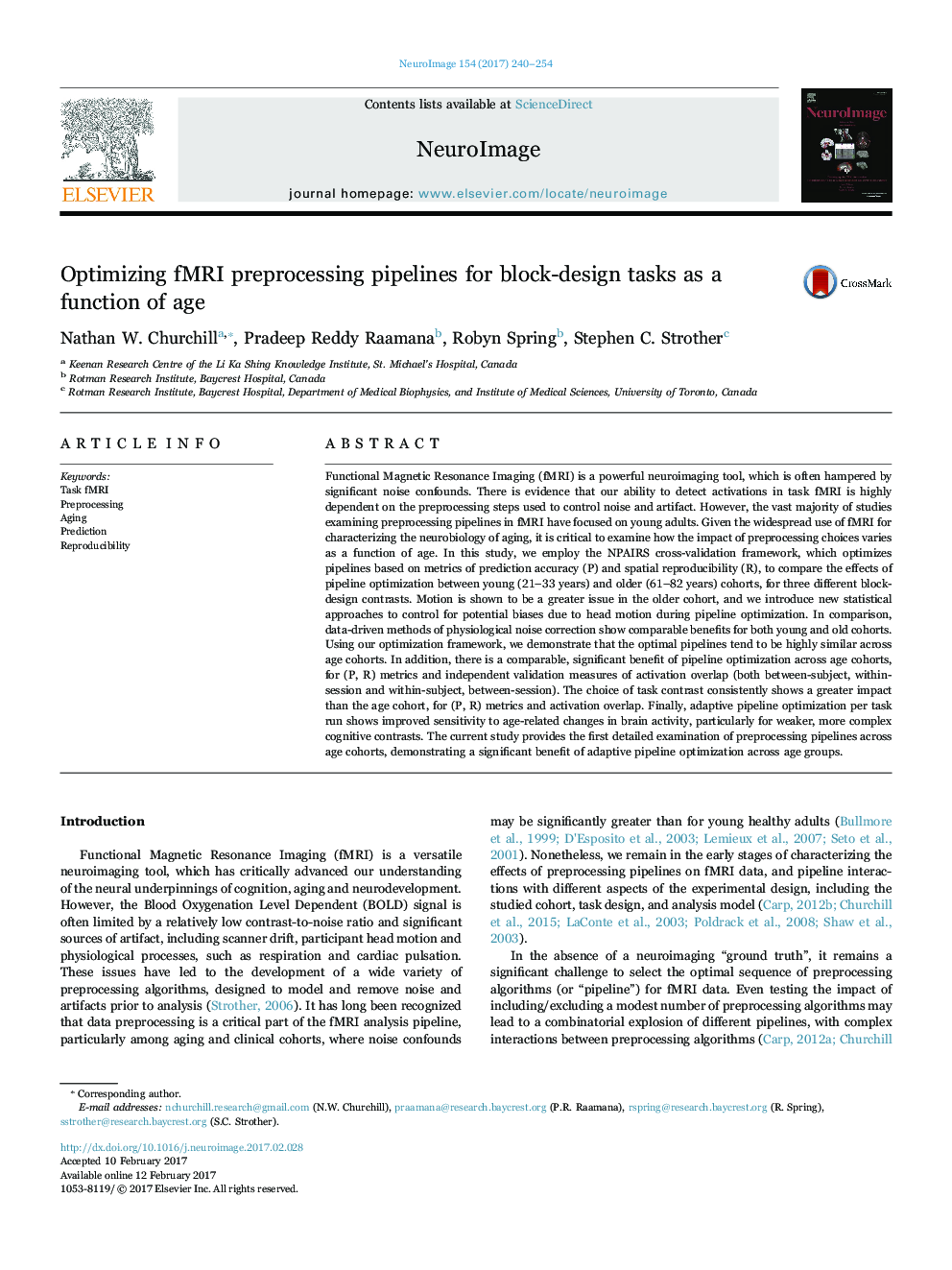| کد مقاله | کد نشریه | سال انتشار | مقاله انگلیسی | نسخه تمام متن |
|---|---|---|---|---|
| 5631071 | 1580856 | 2017 | 15 صفحه PDF | دانلود رایگان |

- we studied how preprocessing choices affect task-based fMRI across the aging span.
- compared the impact of pipeline optimization based on prediction, reproducibility.
- young and old cohorts have similar optimal pipelines.
- show comparable improvements in between-subject and test-retest reliability.
- adaptive pipeline optimization improves detection of age-related brain changes.
Functional Magnetic Resonance Imaging (fMRI) is a powerful neuroimaging tool, which is often hampered by significant noise confounds. There is evidence that our ability to detect activations in task fMRI is highly dependent on the preprocessing steps used to control noise and artifact. However, the vast majority of studies examining preprocessing pipelines in fMRI have focused on young adults. Given the widespread use of fMRI for characterizing the neurobiology of aging, it is critical to examine how the impact of preprocessing choices varies as a function of age. In this study, we employ the NPAIRS cross-validation framework, which optimizes pipelines based on metrics of prediction accuracy (P) and spatial reproducibility (R), to compare the effects of pipeline optimization between young (21-33 years) and older (61-82 years) cohorts, for three different block-design contrasts. Motion is shown to be a greater issue in the older cohort, and we introduce new statistical approaches to control for potential biases due to head motion during pipeline optimization. In comparison, data-driven methods of physiological noise correction show comparable benefits for both young and old cohorts. Using our optimization framework, we demonstrate that the optimal pipelines tend to be highly similar across age cohorts. In addition, there is a comparable, significant benefit of pipeline optimization across age cohorts, for (P, R) metrics and independent validation measures of activation overlap (both between-subject, within-session and within-subject, between-session). The choice of task contrast consistently shows a greater impact than the age cohort, for (P, R) metrics and activation overlap. Finally, adaptive pipeline optimization per task run shows improved sensitivity to age-related changes in brain activity, particularly for weaker, more complex cognitive contrasts. The current study provides the first detailed examination of preprocessing pipelines across age cohorts, demonstrating a significant benefit of adaptive pipeline optimization across age groups.
Journal: NeuroImage - Volume 154, 1 July 2017, Pages 240-254